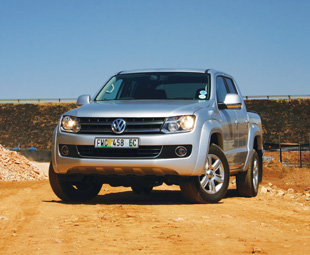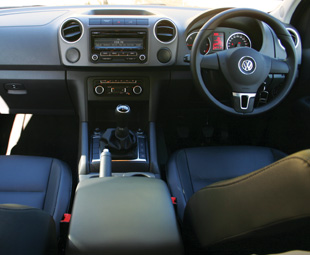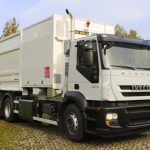Big and bold

GAVIN MYERS answers a question that’s been burning in the minds of the male sex for generations
Men are obsessed with size. The bigger the better and all that. The stereotype even says that owning an overtly big vehicle is a way of compensating … but we’ll stop that analogy there. Basically, I find it slightly worrying that some vehicles are starting to get ridiculously proportioned. Maybe the current generation of designers is a little more insecure than those before them, I don’t know.
Here’s what I’m on about. Volkswagen’s upgraded Amarok Bi-TDI double cab recently arrived for testing. Now, I’m no stranger to large double cabs – the Ford Ranger we reviewed in July barely fitted in my garage. Strangely though, the Amarok posed a little problem. It was more than often hellish to park. Worse, I don’t know why exactly; considering the two vehicles are separated by mere millimetres in any direction.
There is nothing wrong with the VW’s driving position – to the contrary, it feels spot on. And it’s not as though you need to manhandle the beast either. The power steering is light (if numb), the clutch is easy to modulate, and visibility is generally good.
I say generally because it’s sometimes tricky to spot smaller vehicles driving alongside you. Yes, while the vehicle’s size gives you a commanding view of the road ahead, one would be well cautioned to keep checking those blindspots. At least you’ll be safe in the knowledge that the brakes are powerful and responsive if needed and are accompanied by electronic brakeforce distribution (EBD), traction control and electronic stability programme (ESP) including brake assist.
 But the big news surrounding the Amarok is the upgraded Bi-TDI engine. Still a four-cylinder diesel aided by two turbochargers in series, it produces 132 kW – 12 more than the original, at the same 4 000 r/min. The torque peak of 400 Nm is unchanged, but is now sustained for an extra 225 r/min between 1 500 and 2 225 r/min. The result of these nice, big numbers is a smooth, progressive power delivery and strength from a relatively small engine that impresses to the point where it renders other bigger engines a bit impotent. At the pumps, the more powerful engine returns a decent claimed combined consumption of 7,9 l/100 km and spews out 208 g/km of CO2.
But the big news surrounding the Amarok is the upgraded Bi-TDI engine. Still a four-cylinder diesel aided by two turbochargers in series, it produces 132 kW – 12 more than the original, at the same 4 000 r/min. The torque peak of 400 Nm is unchanged, but is now sustained for an extra 225 r/min between 1 500 and 2 225 r/min. The result of these nice, big numbers is a smooth, progressive power delivery and strength from a relatively small engine that impresses to the point where it renders other bigger engines a bit impotent. At the pumps, the more powerful engine returns a decent claimed combined consumption of 7,9 l/100 km and spews out 208 g/km of CO2.
It allows for easy driving, although I feel the six-speed manual’s first-gear could be a little longer for general on-road driving. Our model was the 4×2, fitted with diff-lock and hill-start/descent assist – a combination that we know from previous experience works very well.
There is only one spec offered on the 132 kW Amarok double cab (Highline) which includes a six-speaker MP3/CD sound system, fully-automatic Climatronic dual-zone air-conditioning, cruise control, lockable tailgate, three 12V sockets, among many others. It also was fitted with optional leather seats which were comfortable and provided good support. Needless to say, the interior is hugely spacious and the vehicle rides and handles well with its double-wishbone front suspension and leaf-sprung rear.
This also allows the 2,52m2 load box (with four tie-down hooks) to hold a maximum payload of 932 kg (4×2 model), from a gross vehicle mass (GVM) of 2 820 kg and a gross combination mass of 5 550 kg. Optional heavy-duty leaf-springs can be fitted to increase the GVM to 3 000 kg.
It’s all very big and very practical. Or is it? Well, I think my original observation still stands: I’m not too sure that, in the case of a double cab, so much bigger really is better. I’m starting to feel that these vehicles are getting too big to be practical every day. Which is a shame, because at
R384 500 with a five-year/90 000 km service plan and three-year/100 000 km warranty, the Amarok is a fantastic bakkie.
Published by
Focus on Transport
focusmagsa




